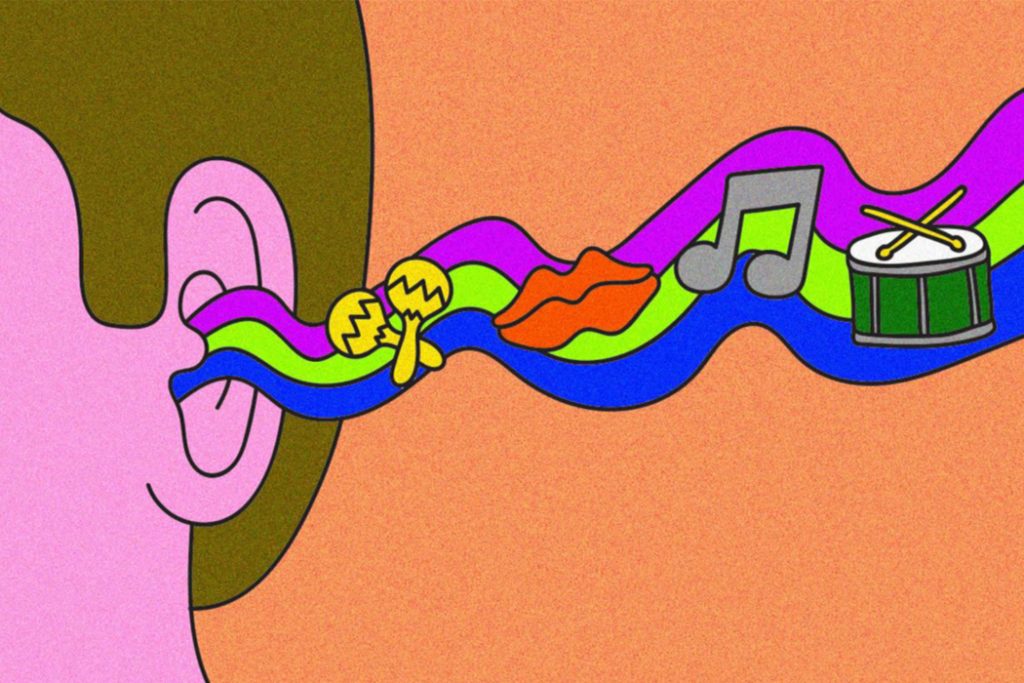
Illustration by Gabriel Alaca
+ What are you working on? Share your musical goals with us and we’ll help you reach them. Tell us what you’d like to achieve and our team of professional musicians, educators, and music industry veterans will help you get there!
“Top Down Mixing,” or the practice of starting your mixing process at the stem/master bus level, is becoming more and more popular. It not only helps you keep a bigger perspective on the mix, but it also improves the cohesiveness of your final product.
In this article, I will explain the techniques used and offer insight into how to make your mixing process more effective.
How to set up for top down mixing?
In order to try this out for yourself, you’ll need to do a little bit of prep in your session. First, set up your aux tracks for each group of instruments. I like to use the following busses:
- Vocal stem
- Background vocal stem
- Synthesizer stem
- Pads stem
- Bass stem
- Drums stem
Sometimes, I will use other busses as needed, such as a “Guitar” bus, or a “Keys” bus if I am using a lot of piano, organ, or electronic piano in the track.
Next, route the appropriate individual tracks to the stem tracks you created. Once they’re properly routed, do a quick balance of the individual tracks. Don’t worry about getting too specific at this point, just do a rough pass of the mix to make sure that nothing sticks out or is inaudible.
Now you’re ready to get started!
Applying signal processing on the stem tracks.
Now that you’ve got a basic balance, start with soloing out a specific stem. I like to start with the drums.
I usually like to use iZotope Neutron 2 on these stem tracks. I’ll start with an EQ module and sculpt the sound of the drums in an overall manner. Next, I’ll add some compression, transient shaping, and even stereo imaging as needed.
This approach forces you to listen to the overall sound of the part, rather than getting too focused on individual tracks and getting lost in the mix.
Balancing the stem tracks.
After you’ve added signal processing to the stem tracks, you’ll want to balance them out and get the best level between these parts. Again, this forces you to listen to the overall drum and bass level, how the synths compare to the vocals, and how everything fits together on a global scale.
Don’t worry about the minor adjustments that you might be hearing at this point. Just get the overall sound levels balanced between parts.
Getting into the details…
Once you’re satisfied with the levels, and have done all you can on the global stem level, it’s time to get into the details, looking at individual tracks. Make any adjustments you need to in order to finish out your mix.
You’ll most likely find that, at this point, you’re not making too many changes. This is a good thing, because you won’t be over-mixing and over-thinking the individual tracks.
The reason this technique works for a lot of people is because they would otherwise worry too much about the individual sounds and not enough about how they all fit together. By starting at the top of the mix (meaning the stem level), you’re able to just focus on the few stems and how they sound together, rather than soloing out the kick drum, for instance, and over-mixing it.
Try this out for yourself on a mix you did a while back. Duplicate your project, reset the mix, and try this approach. Then, compare the results with your original mix. When I started using this technique, I was shocked at how much better my top down mix sounded, and I spent way less time to get there.
Try it out and let me know how it worked for you in the comments below!
New to Soundfly?
All of our Mainstage online courses come with six weeks of 1-on-1 professional mentorship, guidance, and feedback on your work. It’s like having a personal trainer, but for music! Whether you’re interested to dive deep into a production-related topic like Advanced Mix Techniques, Beat Making in Ableton Live, or Intro to Making Music in Logic Pro X (see below), or just to work with a Mentor directly to achieve a musical goal specific to you, we can help you get there!
—
 PALA is a pop songwriter and producer with over a decade of experience. He has worked with many of the top organizations in music including the GRAMMY Foundation. His current project, PALA Sound Studio, features a brand new song every Friday. Many of his tracks start as collaborations on Splice – splice his projects and follow him here.
PALA is a pop songwriter and producer with over a decade of experience. He has worked with many of the top organizations in music including the GRAMMY Foundation. His current project, PALA Sound Studio, features a brand new song every Friday. Many of his tracks start as collaborations on Splice – splice his projects and follow him here.




